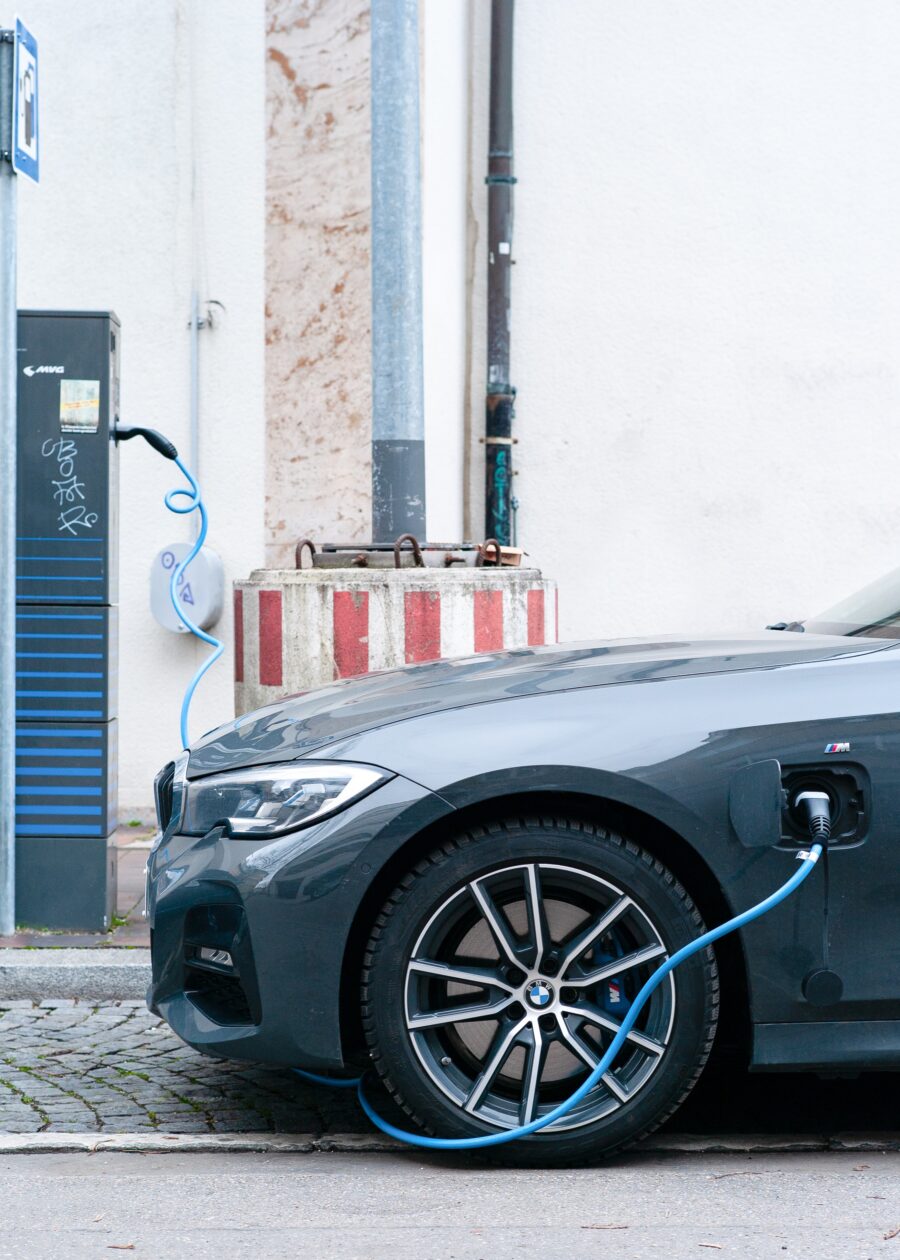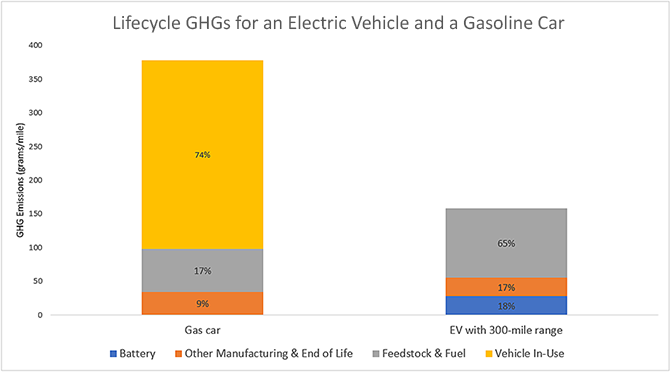
Are Electric Vehicles Actually Better For The Environment?
In my vision of a utopic future in which we’ve solved climate change, trees grow on the tops of shiny solar-powered buildings, civilians zoom around on waterway-based public transit (like Venice but more efficient), and everything smells like vegetation. And, of course, when folks have to drive cars, they’re electric.
Electric vehicles are at the forefront of environmental discourse—due to talking heads like Elon Musk, sure, but also because of their realistic promises. EVs help us maintain our current lifestyles and still lower our carbon footprint. They offer practical solutions, and the transition to an EV world is already happening before our eyes.
“An EV’s fuel is only as green as the electric grid used to charge it—and many electric grids are still coal-powered.”
“The real issue is not whether we are moving to EVs—we are,” says John D. Graham, a professor at Indiana University and author of the book The Global Rise of the Modern Plug-In Electric Vehicle. But the topic of EVs is nuanced.
It turns out that electric vehicle batteries are incredibly energy intensive to manufacture. Plus, an EV’s fuel is only as green as the electric grid used to charge it—and many electric grids are still coal-powered. That news certainly cast a shadow over my utopic vision of clean EVs zooming around a shining city, emission-free. So it’s time to uncover some facts—if you take everything into account, how much better for the environment are EVs, if at all?
Is an EV only as efficient as its power grid?
EVs emit zero tailpipe emissions, the largest source of emissions for a typical gas-powered car. But that doesn’t mean that driving an EV gives you no carbon footprint. In 2020, renewables made up 20% of the country’s electricity generation, while fossil fuels made up another 20%, nuclear power was 20%, and natural gas was 40%.
Some areas use fewer fossil fuels, some more—you can look up your zip code’s energy generation to find out how clean your grid is. The Department of Energy also has a handy emissions calculator to determine how your EV or hybrid’s emissions would compare to those of a typical gas car based on your grid.
Even a grid powered 100% by coal results in an EV that gets the equivalent of 40 or 50 miles per gallon, which is still better efficiency than most gas cars—but not by much.
“On some of the most fossil-fuel-heavy grids in the country, an EV emits around half as much CO2 per mile as a gas car does.”
On some of the most fossil-fuel-heavy grids in the country, an EV emits around half as much CO2 per mile as a gas car does. However, Graham recommends checking your specific area before plunging into the EV game, especially if your main concern is emissions, to see how much you’d really be saving.
How much CO2 does it take to produce an EV battery?
The heart of an electric vehicle is its 1,000-pound lithium-ion battery, the majority of which (more than half) are made in China. A small percentage are made state-side, mostly in Nevada. Producing these batteries consumes a lot of energy, from the labor-intensive extraction process of materials like lithium and cobalt to the manufacturing process that requires super-high temperatures. The process has other ecological concerns, too, like water pollution—most lithium is mined in Australia, China, and South American countries like Chile and Argentina, and the process uses up a lot of water from regions that often already have shortages. It takes over 130,000 gallons of water to extract one ton of lithium, sometimes contaminating reservoirs in the process.
“It takes over 130,000 gallons of water to extract one ton of lithium, sometimes contaminating reservoirs in the process.”
Depending on the energy sources used in the manufacturing process, a lithium-ion battery for a Tesla Model 3 takes between 2.5 and 16 metric tons of CO2 to produce. For scale, it takes driving 2,500 miles in a gas car to produce one metric ton of CO2.
Manufacturing an EV produces about 80% more emissions than manufacturing a gas car, says Graham. That EV must be driven thousands of miles before those carbon emissions start to become worth it. But that’s why when you look at lifetime emissions, EVs still come out ahead.

Photo credit: EPA
What’s the bottom line?
As a general rule of thumb, you can expect an EV to have half the carbon footprint (or less) of a gas car. And that footprint will only go down as more and more energy grids around the country and the world use more renewables.
Graham notes that EVs have both downsides and upsides. They do “reduce greenhouse gases linked to climate change,” he says, but they also have a longer recharging time and a more limited driving range. They save you money in the long run since you don’t have to visit the gas station once a week—but they’re often more expensive up front, says Graham. In 2023, the average new electric vehicle costs $58,000, while the average used EV is around $42,000.
“We need to help low-income Americans shift to electric cars, as they will not find the transition as easy as Tesla buyers do,” he says, also noting that “we need to make sure the transition [to EVs] is not too fast or too slow, since both have unfortunate outcomes.” He suggests getting to 30% EV by 2030 is an attainable, helpful goal for Americans.
“While switching to an EV will certainly lower an individual’s carbon footprint, EVs aren’t a silver bullet for solving climate change.”
The US can look towards Europe as a model for switching to electric—Norway leads the switch to EVs, where 60% of their new car sales are electric. To achieve this quick switch, they offered tax incentives and reduced tolls and parking fees, and they have some of the cheapest electricity in the world since it’s mostly renewable. Plus, most of their EV sales are cheaper vehicles like the Nissan Leaf, not the more expensive Tesla that dominates the US market.
While switching to an EV will certainly lower an individual’s carbon footprint, EVs aren’t a silver bullet for solving climate change. But they are a powerful tool in the arsenal.
Natalie Gale is a Boston-based freelance journalist. When she’s not writing about art, food, or sustainability, you can find her biking to the farmers’ market, baking, sewing, or planning her next Halloween costume. Say hi on Instagram!




